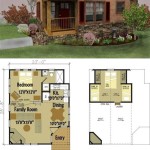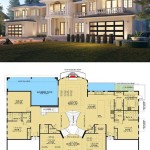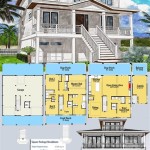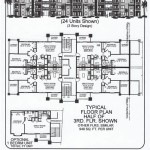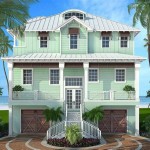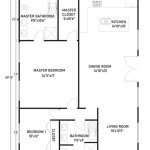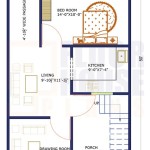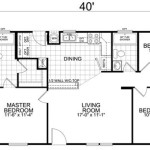House Plans for Pie-Shaped Lots: Maximizing Potential in Angular Spaces
Pie-shaped lots, also known as fan-shaped or wedge-shaped lots, present unique challenges and opportunities in residential design. Characterized by a narrow frontage that gradually widens towards the rear property line, these lots demand careful planning to maximize usable space, ensure optimal functionality, and create an aesthetically pleasing home. Standard rectangular house plans often prove unsuitable for these configurations. Therefore, specialized house plans are essential for addressing the specific constraints and leveraging the inherent advantages of pie-shaped lots.
The allure of a pie-shaped lot often lies in its potential for a larger backyard and increased privacy at the rear. However, realizing this potential requires a design that thoughtfully considers setbacks, easements, and the overall orientation of the house. The goal is to create a floor plan that not only fits comfortably within the lot's boundaries but also complements its unique geometry.
Many factors influence the selection and adaptation of house plans for pie-shaped lots. These include the lot's dimensions (width at the front and rear, overall depth), local zoning regulations concerning building setbacks and height restrictions, the desired style and size of the house, and the homeowner's lifestyle and preferences. Successfully navigating these considerations results in a home that feels spacious, functional, and well-integrated with its surroundings.
Understanding the Challenges of Pie-Shaped Lots
The primary challenge with pie-shaped lots stems from their non-rectangular shape. Traditional house plans, designed for rectangular parcels, often require significant modifications or complete redesigns to fit within the angled boundaries. This can lead to awkward interior spaces, inefficient use of square footage, and difficulties in adhering to setback requirements.
Setbacks, which are the minimum distances a building must be from property lines, pose a particular hurdle. The narrowing frontage of a pie-shaped lot can restrict the width of the house's facade, potentially limiting the design options for the front elevation. Similarly, side setbacks can influence the placement and layout of rooms along the property lines.
Another challenge involves maximizing the usable backyard space. While pie-shaped lots often offer a larger backyard compared to rectangular lots of similar area, the irregular shape can make it difficult to design functional outdoor living areas, such as patios, gardens, or swimming pools. Careful planning is needed to create a cohesive and well-organized outdoor space that complements the house's design.
Furthermore, the orientation of the lot relative to the sun's path can impact the design. A house facing east on a pie-shaped lot might experience excessive morning sun exposure on one side, while a west-facing house might suffer from intense afternoon heat. Thoughtful consideration of solar orientation is crucial for optimizing energy efficiency and indoor comfort.
Key Considerations in Designing for Pie-Shaped Lots
Several key considerations guide the design process for houses on pie-shaped lots. These factors help ensure a functional, aesthetically pleasing, and sustainable home that maximizes the available space and addresses the specific challenges of the lot's geometry.
The first consideration is the orientation of the house on the lot. Determining the optimal placement involves analyzing sun exposure, prevailing winds, and views. Orienting the house to minimize heat gain in the summer and maximize solar gain in the winter can significantly reduce energy consumption. Capturing desirable views while blocking undesirable ones also contributes to the overall livability of the home. The main living areas should ideally be positioned to take advantage of the best views and natural light, while less frequently used spaces can be located in areas with less desirable orientation.
Another crucial consideration is the internal layout of the house. The floor plan should be designed to accommodate the angled shape of the lot while maintaining a sense of flow and functionality. Rooms should be arranged strategically to maximize usable space and minimize awkward angles. Open-concept layouts can be particularly effective in pie-shaped lots, as they create a sense of spaciousness and allow for flexible use of the available area. Incorporating angled walls or curved elements can also help to soften the sharp corners and create a more harmonious interior design.
Garage placement is also an important factor. Depending on the lot's width and the local zoning regulations, the garage may need to be located at the front, side, or rear of the house. A front-facing garage can dominate the facade, potentially detracting from the curb appeal. A side-entry garage, while offering a more discreet appearance, may require a longer driveway and can limit the usable space in the side yard. A rear-entry garage, accessible via an alley or side driveway, is often the most desirable option, as it minimizes visual impact and maximizes the usable space at the front of the house.
Furthermore, the design should incorporate strategies for addressing privacy concerns. Given the potential for increased visibility from neighboring properties in a pie-shaped lot, thoughtful landscaping and strategic placement of windows can help to create a sense of seclusion and privacy. Tall fences, hedges, or trees can effectively screen the backyard from view, while strategically placed windows can allow for natural light without compromising privacy.
Strategies for Optimizing Space and Functionality
Several architectural and design strategies can be employed to optimize space and functionality in houses on pie-shaped lots. These strategies aim to overcome the challenges posed by the lot's unique geometry and create a comfortable and livable home.
One common strategy is to utilize angled or curved walls to soften the sharp corners and create a more fluid interior space. Angled walls can be used to define distinct living areas without creating a sense of confinement, while curved walls can add a touch of elegance and sophistication. These design elements can also help to maximize usable space by eliminating awkward corners and creating more efficient circulation patterns.
Another effective strategy is to incorporate built-in storage solutions. Built-in shelves, cabinets, and seating can maximize storage space while seamlessly integrating with the architecture of the house. This is particularly useful in areas with limited square footage, such as hallways or bedrooms. Built-in storage can also help to create a more organized and clutter-free living environment.
Consider vertically expanding the house by adding a second story. This strategy allows for maximizing the usable square footage without expanding the footprint of the house. A two-story house can offer more living space, bedrooms, and bathrooms, while still adhering to setback requirements. However, careful consideration must be given to the impact of the second story on privacy and sun exposure for neighboring properties.
Outdoor living spaces should be carefully integrated with the overall design of the house. Patios, decks, and gardens can extend the living area outdoors, creating a seamless transition between the interior and exterior spaces. Incorporating features such as outdoor kitchens, fireplaces, and seating areas can enhance the functionality and enjoyment of the outdoor space. The landscaping should be designed to complement the architecture of the house and create a cohesive and visually appealing environment.
Furthermore, paying close attention to window placement and size is crucial for maximizing natural light and ventilation. Large windows can bring ample natural light into the house, creating a bright and airy atmosphere. However, strategically placing windows to avoid excessive sun exposure is also important. Consider using energy-efficient windows and window coverings to reduce heat gain in the summer and heat loss in the winter.
In conclusion, while pie-shaped lots present unique design challenges, they also offer opportunities for creating distinctive and functional homes. By carefully considering the lot's geometry, orientation, and zoning regulations, and by employing specialized design strategies, it is possible to maximize the potential of these angular spaces and create a home that is both beautiful and livable. The success lies in adapting to the unique characteristics of the lot and embracing the design possibilities it offers.

Wishlist House Plan Contemporary Homes Mediterranean Prairie Craftsman Shingle Style Traditional Transitional Designs

Craftsman House Plan For A Pie Shaped Or Rear View Lot 2734 Sq Ft 64544sc Architectural Designs Plans

House Plans For Narrow Lots And Wide Probuilder

Craftsman House Plan For A Pie Shaped Or Rear View Lot 2734 Sq Ft 64544sc Architectural Designs Plans

House Plan 1028 Willow Creek Circle European

63 Triangle Lot Pie Shape Ideas House Plans French Country

Altaira House Plan Custom Home Plans Sater Design Collection

4 534 Jenish House Design Limited

Luxury Contemporary Style House Plan 7536

Building A Home One Step Forward Ten Steps Back The Makerista

